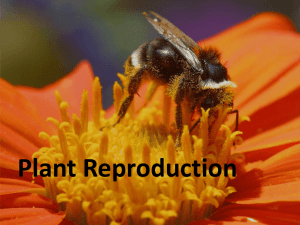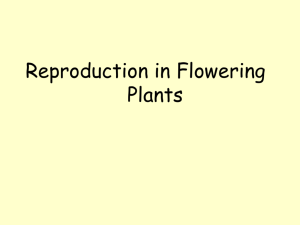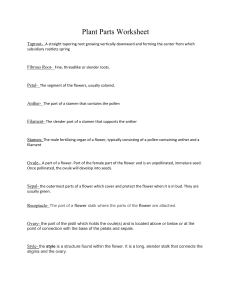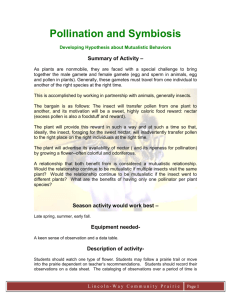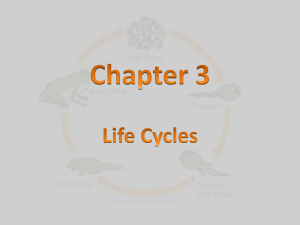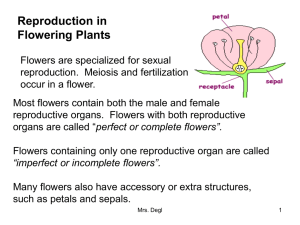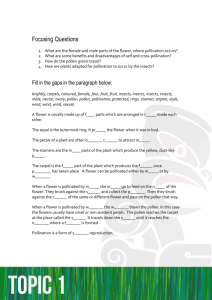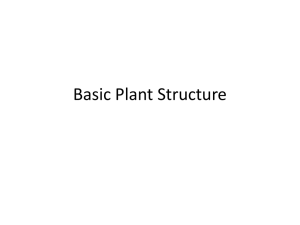Sexual Reproduction in Plants Worksheet
advertisement
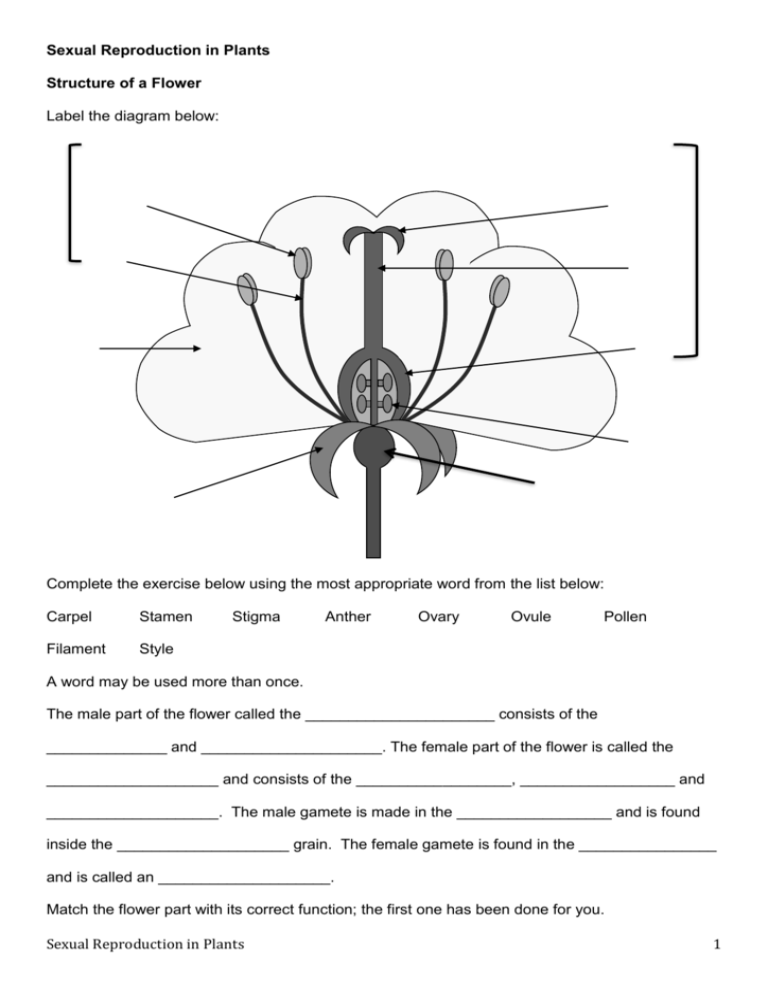
Sexual Reproduction in Plants Structure of a Flower Label the diagram below: Complete the exercise below using the most appropriate word from the list below: Carpel Stamen Filament Style Stigma Anther Ovary Ovule Pollen A word may be used more than once. The male part of the flower called the ______________________ consists of the ______________ and _____________________. The female part of the flower is called the ____________________ and consists of the __________________, __________________ and ____________________. The male gamete is made in the __________________ and is found inside the ____________________ grain. The female gamete is found in the ________________ and is called an ____________________. Match the flower part with its correct function; the first one has been done for you. Sexual Reproduction in Plants 1 Petal Stamen structure that produces pollen Sepal Male gamete Stigma Holds the ovule(s) and is located below the style Stamen Long slender stalk that connects the stigma to the ovary Carpel Male reproductive organ of the flower Style Green parts that surround and protect the flower when it is in bud Nectary Modified leaves that are often brightly coloured to attract pollinators Ovary Receives pollen at pollination Ovule Female reproductive organ of the flower Pollen Stamen structure that supports the anther Filament Female gamete Anther Secretes nectar and is often scented Pollination1 Pollination What is pollination (use the words anther and stigma) Sexual Reproduction in Plants 2 There are two main mechanisms for pollination, wind and insect. Flowers are adapted to suit the mechanism by which they are pollinated. Identify which flower below is wind-pollinated and which is insect pollinated: _______________________ _______________________ Give an example of a plant that has flowers that are insect pollinated: Give an example of a plant that has flowers that are wind pollinated: Complete the table which compares insect and wind pollinated plants. Use the phrases at the bottom of the page. Feature Sexual Reproduction in Plants Insect Pollinated Wind Pollinated 3 Size of Petals (to attract insects) (no need to attract insects) (to attract insects) (no need to attract insects) (no need to attract insects) (no need to attract insects) (less wastage as not as random) (most does not reach the flower) (to attach to the insect) (so it can be blown in the wind and to stop it clumping) (to brush against insects) (to release and catch pollen) Colour of Petals Scent Nectary Quantity of Pollen Pollen grain surface Position of anthers and stigma Shape of stigma Large Small Dull brown, green Scented Not scented Nectar produced Brightly coloured No Nectar produced Small amount produced Large amount produced Enclosed within the flower Small and round Often sticky or spiky Outside the flower Large and feathery Usually light and smooth Explain the difference between self-pollination and cross-pollination: Sexual Reproduction in Plants 4 Why do plants prefer to carry out cross-pollination? Explain two methods shown below that would help to prevent self-pollination: The Daily Red Maid Bristol Scientists find key factor in the decline of bees They used to be a familiar site in the summer Sexual Reproduction in Plants 5

